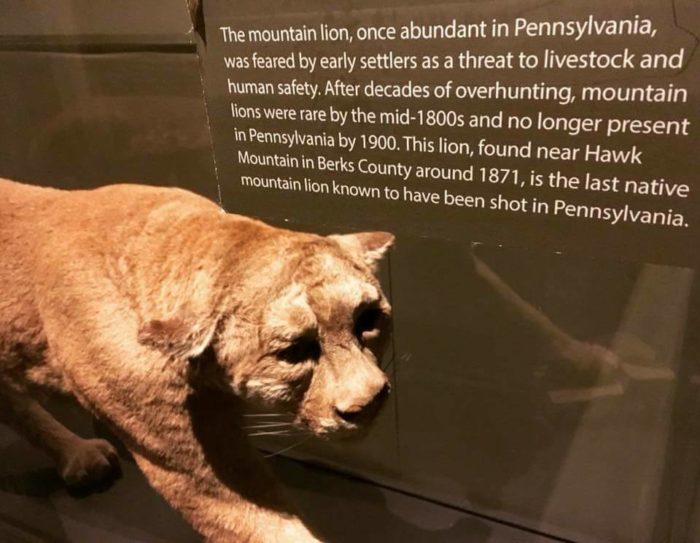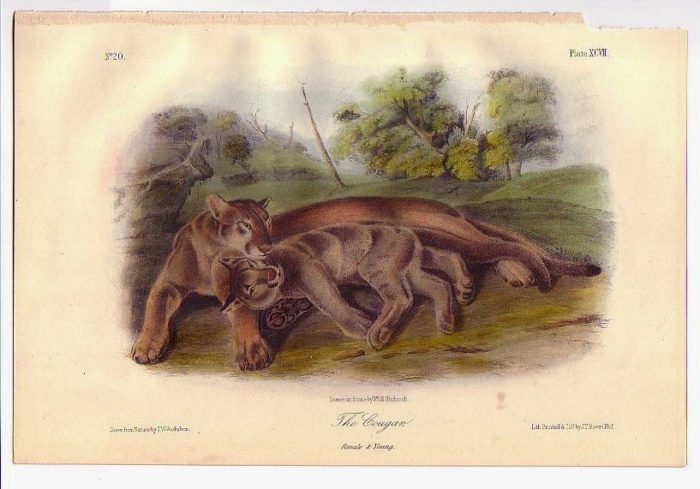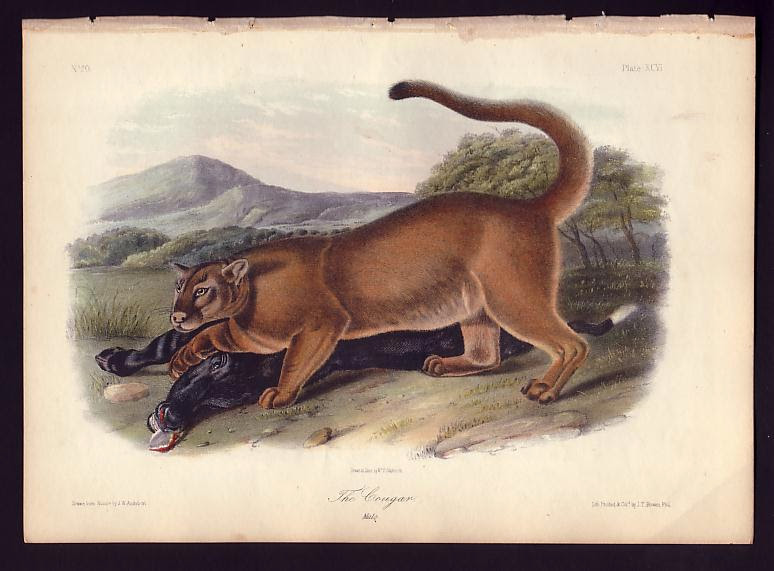While the Eastern Cougar has recently been officially declared extinct after decades of being searched for and found to be absent from our landscape since the 1930s, it is interesting to look back at their story and the American ecosystem that once was. A taxidermied individual, one of the last known local specimens, is on display at the State Museum of Pennsylvania and was photographed by our vice president, Brian Goodman.

Unnecessary fear and a lack of knowledge led to the relentless persecution of predators as our nation was growing. Wolves, cougars and bears were exterminated in massive numbers across the east for centuries. There were even bounties placed by governments to ensure their eradication. Many species ended up only hanging on in the Western states that had far less people and rugged terrain or in remote, relatively inaccessible places such as the Everglades as in the case of the Florida panther which is hanging on with a very small population. There was also logging and habitat destruction on a massive scale that coupled with overhunting and loss of a favorite prey, the white-tailed deer, ensured they could no longer hang on.
Fast forward to today when many remote forests have regrown and the white-tailed deer has rebounded to the point of over population in many areas thanks to focused restoration efforts, lack of natural predators and the creation of ideal habitat through our fragmented development practices. Other large mammals like the adaptable black bear have returned to a lot of their former range and are slowly expanding.
The western cougar or mountain lion, known to travel long distances, has began to expand its range that was once restricted to the Rocky Mountains and west, is now being confirmed east of the Mississippi with greater frequency. Occasionally one of these big cats, confirmed through genetic testing as a western individual, usually a young male, shows up in New England or elsewhere, hundreds or even a thousand miles from where it was born.
While some will argue that cougars, or mountain lions, have never left and reports have never ceased, we find that almost every single report we have seen is unverified, shows no physical evidence, or if photos or video does exist they can be easily proven as a domestic cat, coyote, or bobcat. Other, rare but actually confirmed sightings outside of the known range can be traced to migrating or sometimes even escaped captive individuals thanks to DNA technology. So while sightings can occur, that doesn’t confirm the existence of the Eastern Cougar. These individuals also don’t necessarily mean a new population will take hold. Even with food and habitat, they still need both sexes to be present and multiple individuals to ensure the health of that new population.
We are a science and fact based group but we have learned over the years that wildlife is full of surprises. In modern history a new leopard frog species has been discovered in highly populated areas (also found in parts of Maryland) and a new coyote hybrid has populated our landscape in place of the wolves that once roamed. Just because something isn’t known to occur doesn’t mean it doesn’t exist or won’t some day in the future. Life tends to find a way to survive and doesn’t always follow the rules we set for them in our field guides and known research. That is why the natural sciences are ever evolving and growing. As skeptical as we may be of any sighting in our area (they have been historically reported and sometimes still are), that doesn’t mean we won’t listen and help anyone who believes they saw something to help confirm or identify the species that was seen.
Now the big question, will a big cat like the cougar ever once again roam the forests of the east as a permanent resident? If allowed to do so, from what we can tell, it isn’t a matter of if but when and where. We for one welcome a restoration of the ecosystem, especially in our remote and less populated areas where as proven elsewhere in the country, large predators and humans can coexist in relative tranquility.



